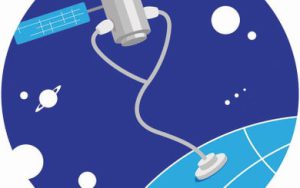
Micronutrient deficiencies are serious and afflict over 2 billion people around the world, including 340 million children. These deficiencies have fatal health consequences, but early diagnosis for effective treatment is costly and requires time-consuming blood draws and lab tests.
However, new research has shed light on a more efficient approach. Elizabeth Bondi and her team at Harvard University recently used artificial intelligence and publicly available satellite data to pinpoint geographical locations where the population is at high risk of micronutrient deficiencies. This research could signal better and early public health interventions.
Existing AI systems are capable of using satellite data to predict localized food security challenges, but they mostly rely on directly observable features. Something like agricultural productivity can be estimated from vegetation, but micronutrient availability is much more difficult to calculate.
After studying research showing that areas near forests tend to have better dietary diversity, Bondi and her team sough to identify less popular markers for potential malnourishment. Their work reveals that the combination of data such as vegetation cover, water and weather presence can suggest where populations will lack Vitamin A, Vitamin B12 or iron.
The team evaluated raw satellite measurements and made consultations with local public health officials. They then used AI to filter through the data and mark principal features. For example, a food market, inferred through the buildings and roads visible, was crucial for predicting a community’s risk level. These features were then linked to specific nutrients inadequate in four regions’ populations across Madagascar. The researchers used real-world biomarker data to train and test their AI program.
Predictions of regional-level micronutrient deficiency in populations outside the training data sets met and even sometimes exceeded the accuracy of estimates based on surveys conducted by local public health officials.
‘Our work showcases a method that allows for identification and targeting of vulnerable populations for nutritional support that may supplement… expensive and invasive procedures,’ says Bondi.
‘This is a novel contribution that highlights AI’s potential to advance public health,’ says Christine Ekenga, Emory University epidemiologist. She added that the collection of health data in limited-resource settings can be tasking because of cost and infrastructure constraints and ‘the authors have validated a method that can overcome these challenges.’
The researchers hope to develop a software application which extends this analysis to other countries that have public satellite data. ‘We hope that this application could allow public health officials to interact with the insights our system can provide and help to inform interventions,’ says Bondi.
By Marvellous Iwendi.
Source: Scientific American